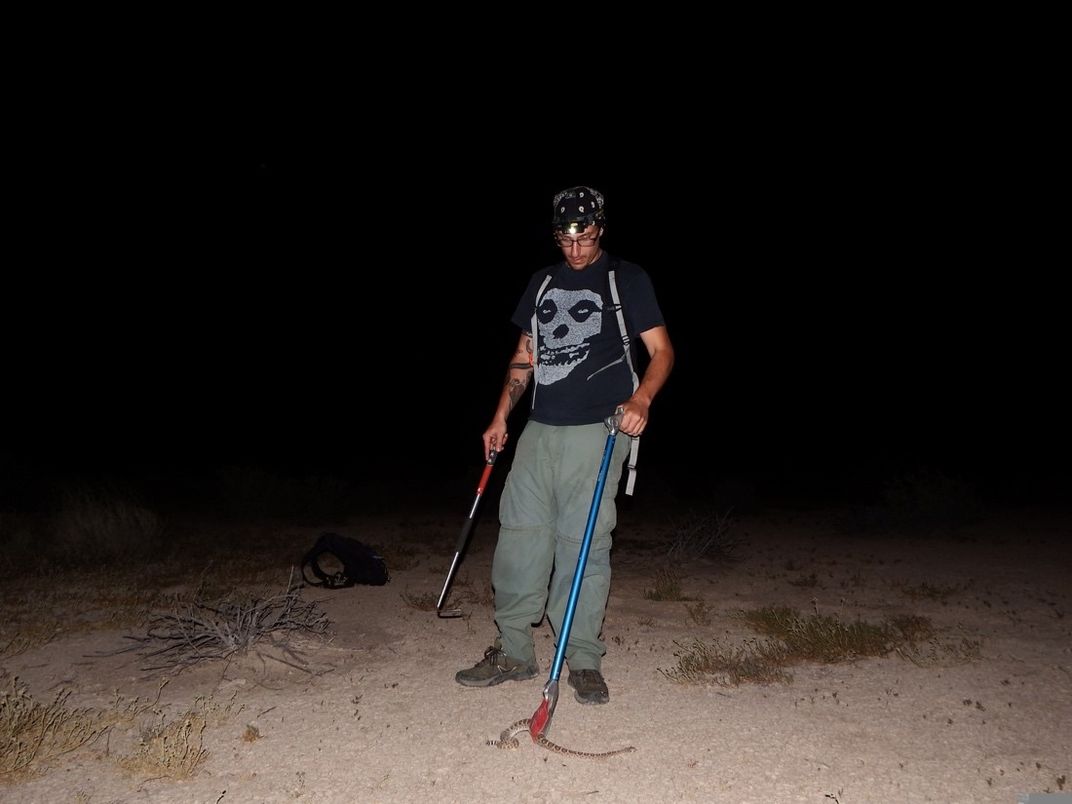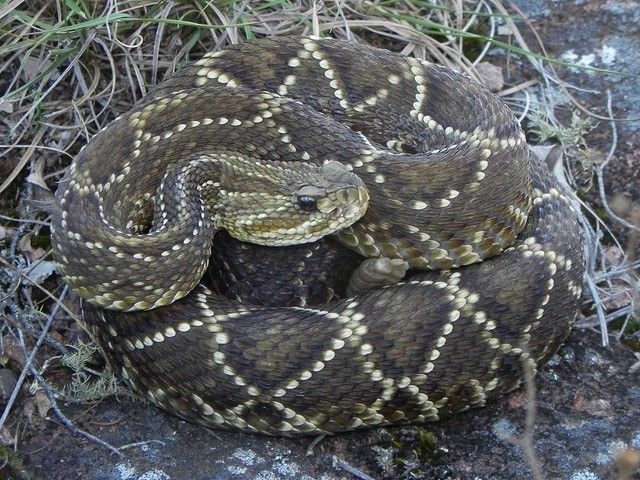NATIONAL MUSEUM OF NATURAL HISTORY
Viper’s DNA Reveals Ancient Map of South America
Although vipers are famous for their venomous bites, it turns out these snakes have another story to tell.
/https://tf-cmsv2-smithsonianmag-media.s3.amazonaws.com/blogging/featured/Neotropical_rattlesnake_on_brown_gravel..jpg)
Although vipers are famous for their venomous bites, it turns out these snakes have another story to tell. By studying the genetic diversity of the neotropical rattlesnake, Crotalus durissus, scientists can reconstruct how the South American landscape may have looked millions of years ago.
Neotropical rattlesnakes are found in dry, arid parts of South America and small savanna pockets in the Amazon. Many of these snake populations are discontinuous — or separated from one another by wet rainforest habitat. Although these populations are all part of the same species, they have small, but noticeable genetic differences. These differences can signal when and where populations stopped interbreeding and became geographically isolated. But it’s difficult to picture how and when these gradual changes happened.
At the Smithsonian’s National Museum of Natural History, Dr. Edward Myers – a postdoctoral fellow in the Division of Amphibians and Reptiles — has built environmental models for neotropical rattlesnakes in ancient South America using data from the museum’s collection. By combining his models with genetic records from present populations, Myers can map how this viper once slithered across South America, leaving behind several marooned populations in savanna islands surrounded by a sea of inhospitable tropical rainforest.
The recipe for mapping past climate
Most of the museum’s rattlesnake specimens are catalogued with a precise location and date. Myers has paired this information with climate data, like average temperature and precipitation, from databases like WorldClim to determine what climate range the snakes can live in. What they prefer now is similar to what they preferred in the past.
“By projecting what we know about this species’ current environment, we can find where this species could have lived in ancient South America,” said Myers.
Since today's separated populations are genetically alike enough to count as one species, they must have been in the “not too distant past,” which to an evolutionary biologist means one point in the last few million years. This suggests currently isolated populations were probably once connected by rattlesnake-suitable environments that have since disappeared.
Climate models show how the continent’s landscape changed over time, giving Myers a hypothetical timeframe for when different colonies may have splintered.
“You can use climate models as a hypothesis for what a pattern of genetic diversity in the species should look like today,” said Dr. Rayna Bell, an evolutionary biologist at the California Academy of Sciences and one of Myers’s collaborators. Sequencing the snake’s genomic records can be used as a test for Myers’ environmental models.
How to check the time on a molecular clock

As the South American environment changed, some regions became less hospitable for rattlesnakes. These snakes could no longer travel back and forth so they began to evolve separately over thousands of years.
Over time, genetic differences between separate communities grew. Evolutionary biologists can compare the percent of genetic change between populations to determine when they diverged as a sort of “molecular clock.”
“With DNA sequencing, you can test how populations were connected and whether there’s been breeding between two populations that are separated now,” said Myers.
Once Myers identifies genetic differences between populations, he can use that data to chart when populations of rattlesnakes in South America fragmented — and, in turn, test whether his ancient models of where the snakes lived in the past are accurate.
A good collection fast-forwards research time

Without the museum’s collection, gathering data about neotropical rattlesnakes would take Myers at least a decade. The species inhabit 11 different countries, which makes sampling snakes no easy task.
"For a species with a broad geographic distribution, there’s no way a person can go out by themselves and get a really good sample over the whole geographic range in a year or two,” said Dr. Kevin de Queiroz, Curator of Amphibians and Reptiles at the museum. “It’s really critical that these collections exist to even be able to do those studies.”
The museum’s collections have drastically reduced the timeframe for Myers’s study, which is good news because Myers’s research has been on hold due to COVID-19.
Once his study resumes, Myers will be one step closer to unwrapping the snakes’ ancient continental trek. The information from their evolutionary history will improve biologists’ understanding of how animals responded to ancient dynamic climate in South America.
Related Stories:
Get to Know the Scientist Reconstructing Past Ocean Temperatures
Meet the Scientist Studying How Organisms Become Fossils
Digitization Allows Public Access to Smithsonian’s Hidden Collections
Here's How Scientists Reconstruct Earth's Past Climates
Safety Suit Up: New Clean Room Allows Scientists to Study Fragile Ancient DNA

